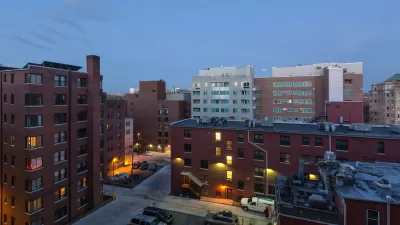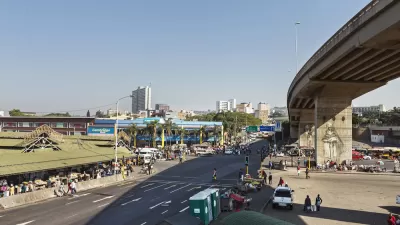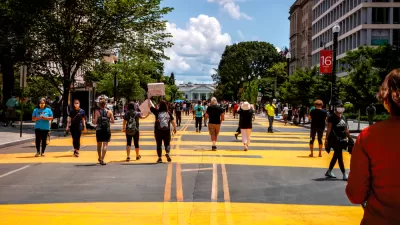Congress Heights, in Washington D.C., has suffered decades of neglect. Now, city planners and activists want to transform it into a mixed-use, mixed-income success story. What if it doesn't work? What if it works too well?
"...as D.C. invests millions in new developments like the events pavilion and tech center at St. Elizabeths East, as Millennials begin to look east of the river for inexpensive housing, should we also be worried about the negative effects of growth?" asks Rachel Kaufman in a post for Elevation DC.
"Congress Heights isn't going to turn into 14th Street overnight. But everyone's watching to see what it will turn into."
"It's the same story that's played out all over the city. Neighborhoods scarred by rioting in the 1960s--neighborhoods where dealers sold crack in broad daylight--are unrecognizable now. 14th Street, once a hotbed of drugs and prostitution, got a Whole Foods 14 years ago and the rest, as they say, is history. Formerly sleepy 'streetcar suburbs' like Petworth and Brookland are now heaven for house flippers. In other words, as everyone knows, you take the good with the bad. The decline in crime and drugs accompanies rising rents and home prices. Increased amenities--a better grocery store, a neighborhood bar or restaurant, nicer bus routes--threaten small businesses and affordable housing. It's a balancing act, and one that not many cities, D.C. included, are particularly good at."
"And in Congress Heights? 'There's huge concern [about gentrification] within the residents of the area, definitely,' says Evelyn Kasongo, Ward 8 Neighborhood Planning Coordinator for the Office of Planning."
FULL STORY: The past, present and future of Congress Heights

Planetizen Federal Action Tracker
A weekly monitor of how Trump’s orders and actions are impacting planners and planning in America.

Maui's Vacation Rental Debate Turns Ugly
Verbal attacks, misinformation campaigns and fistfights plague a high-stakes debate to convert thousands of vacation rentals into long-term housing.

Restaurant Patios Were a Pandemic Win — Why Were They so Hard to Keep?
Social distancing requirements and changes in travel patterns prompted cities to pilot new uses for street and sidewalk space. Then it got complicated.

In California Battle of Housing vs. Environment, Housing Just Won
A new state law significantly limits the power of CEQA, an environmental review law that served as a powerful tool for blocking new development.

Boulder Eliminates Parking Minimums Citywide
Officials estimate the cost of building a single underground parking space at up to $100,000.

Orange County, Florida Adopts Largest US “Sprawl Repair” Code
The ‘Orange Code’ seeks to rectify decades of sprawl-inducing, car-oriented development.
Urban Design for Planners 1: Software Tools
This six-course series explores essential urban design concepts using open source software and equips planners with the tools they need to participate fully in the urban design process.
Planning for Universal Design
Learn the tools for implementing Universal Design in planning regulations.
Heyer Gruel & Associates PA
JM Goldson LLC
Custer County Colorado
City of Camden Redevelopment Agency
City of Astoria
Transportation Research & Education Center (TREC) at Portland State University
Jefferson Parish Government
Camden Redevelopment Agency
City of Claremont





























